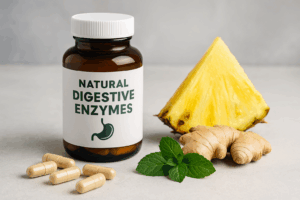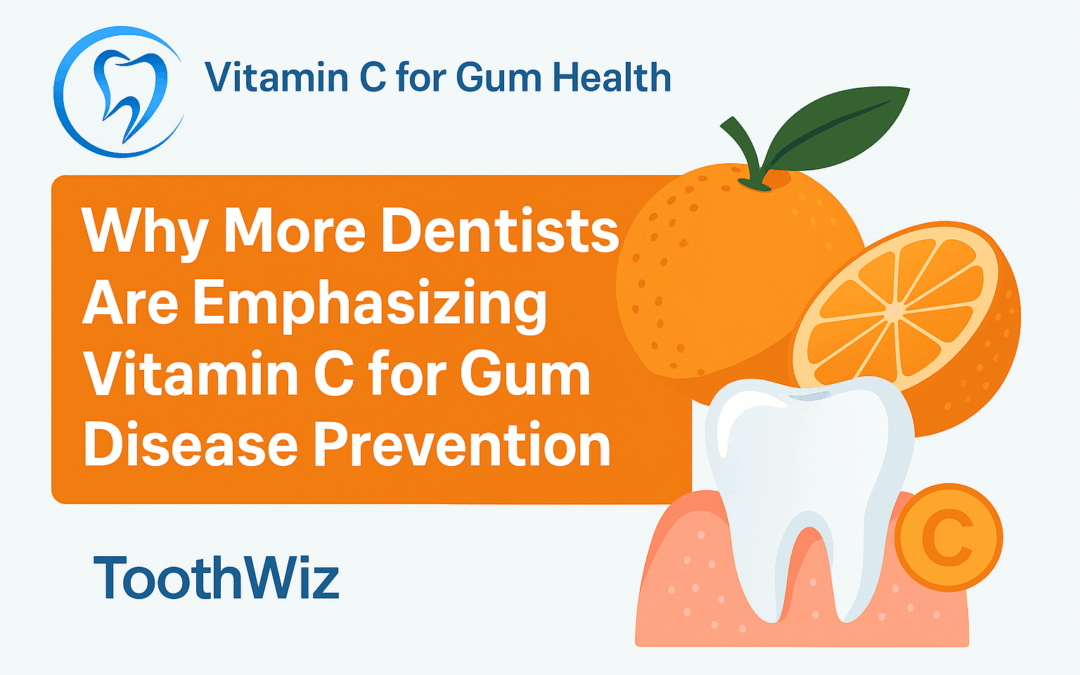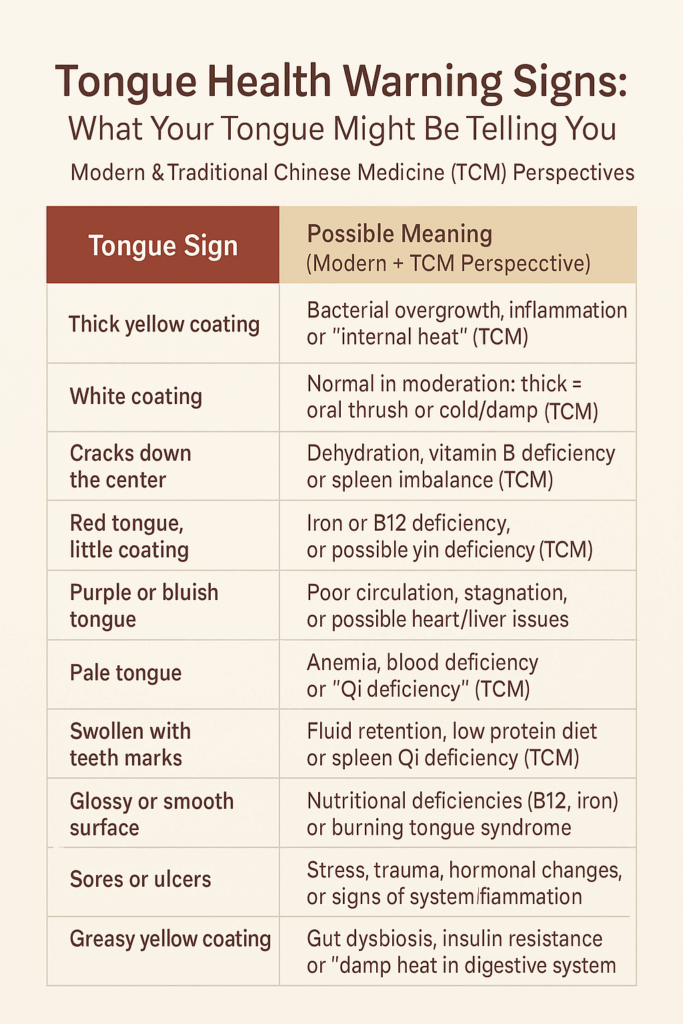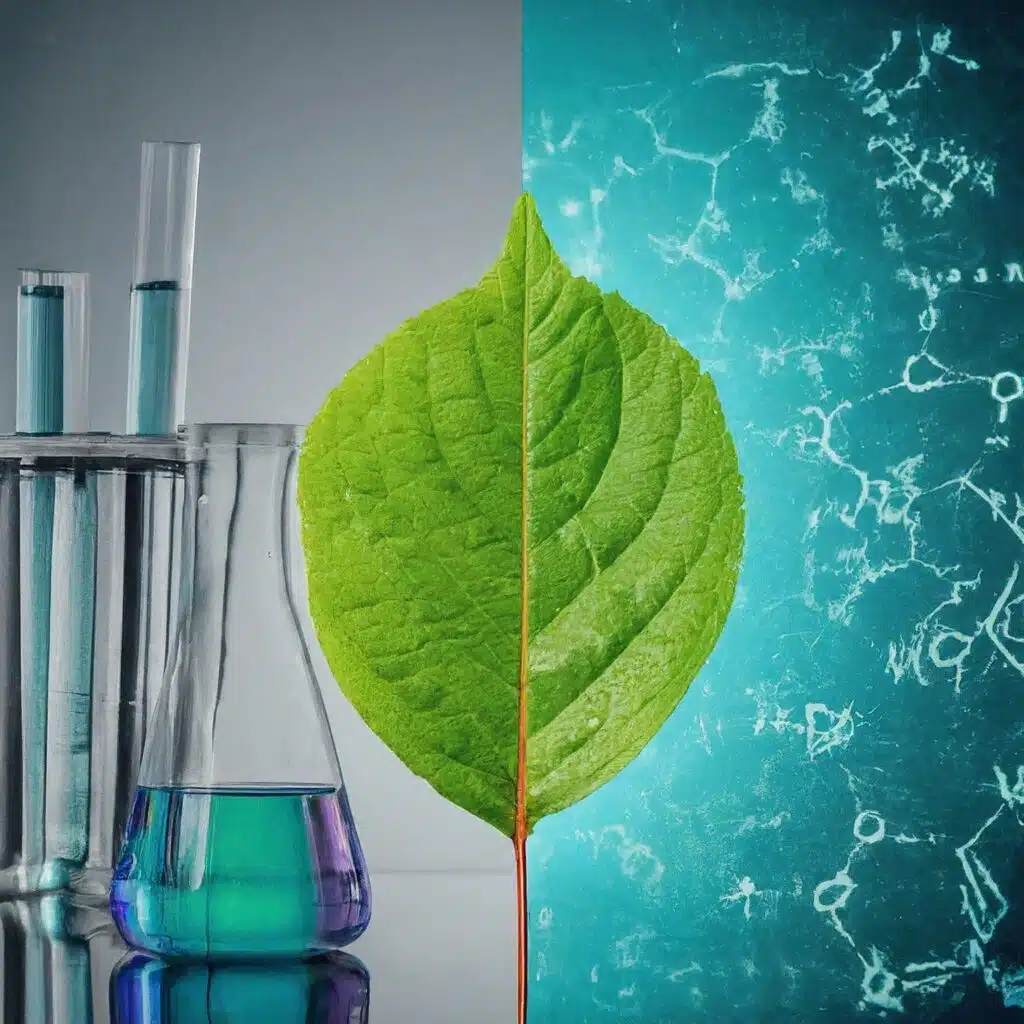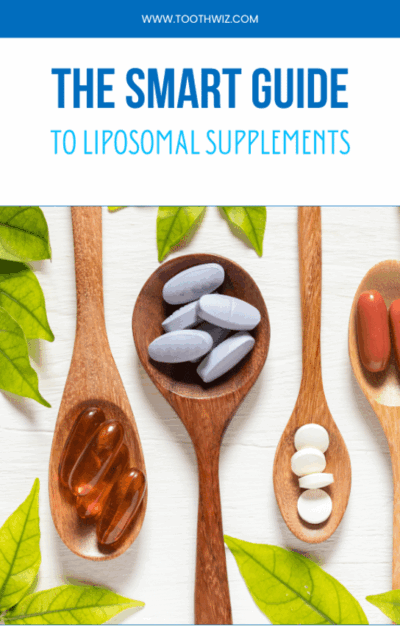
10 Surprising Benefits of Natural Digestive Enzyme Supplements
Have you ever found yourself bloated after a satisfying meal, wondering if the food enjoyed is now an enemy to your digestive system? You’re not alone! In fact, the global market for digestive enzyme supplements is projected to grow at an impressive average rate of 7.3% per year between 2020 and 2027 — a figure known as the compound annual growth rate (CAGR), which reflects steady, year-over-year expansion. That kind of growth suggests a rising public interest in gut health. Many are turning to natural digestive enzyme supplements as a solution, seeking comfort for their gastrointestinal woes and general wellness. These little capsules aren’t just trendy; they pack a powerful punch when it comes to processing nutrients and supporting overall digestion.
Imagine this: You take a bite of your favorite pasta dish without hesitation, only to be greeted by discomfort later on. What if you had a way to bridge that gap? Natural digestive enzymes are the unsung heroes in our quest for digestive harmony. They work tirelessly behind the scenes, breaking down proteins, fats, and carbohydrates so we can absorb all those fabulous nutrients without feeling like we’ve swallowed a brick.
But wait—did you know that these supplements offer more than just relief from bloating? From enhancing nutrient absorption to promoting gut health, the benefits are as diverse as the foods we eat! Let’s delve into ten surprising advantages that might just convince you to give these digestive enzyme capsules a try. Who knew that something so small could lead to such big changes in your well-being?
Nutrient Absorption
Have you ever felt like you’re eating all the right foods but not getting all the right nutrients? It’s a common conundrum, and that’s where natural digestive enzyme supplements step in to save the day! These tiny powerhouses don’t just assist in digestion; they act as catalysts for improved nutrient absorption. Think of them as your personal cheerleaders, encouraging your body to get every last bit of goodness from your meals.
The Science Behind Absorption
Nutrient absorption is a complex process that begins in the mouth and continues through the digestive tract. It’s a beautiful dance of enzymes breaking down food into smaller, more manageable pieces. However, not everyone performs this dance flawlessly. Factors like age, diet, and stress can hinder our body’s natural enzyme production, leading to missed opportunities for nutrient uptake.
According to recent research, optimal nutrient absorption is vital for overall health—after all, what’s the use of consuming superfoods if your body isn’t equipped to utilize them? By incorporating plant-based digestive supplements or enzyme capsules, you can enhance this process significantly.
The Benefits Are Plentiful!
- Boosted Vitamin Uptake: Enzymes help break down foods rich in vitamins and minerals such as leafy greens and whole grains. This means more vitamin C from your kale salad and better iron absorption from legumes!
- Aid in Protein Digestion: Ever heard of proteases? These enzymes specialize in breaking down proteins into amino acids—crucial for muscle repair and growth. So next time you enjoy that protein shake post-workout, know that the right enzymes are at work!
- Lactose Liberation: If you’re one of the millions who experience lactose intolerance, specific enzyme supplements like lactase can be a game changer. They make dairy digestible by breaking down lactose into glucose and galactose—so go ahead, indulge in that cheese plate guilt-free!
- Bloating Be Gone: With improved absorption comes reduced bloating! By ensuring your body utilizes nutrients efficiently, it minimizes fermentation processes that lead to gas. Who wouldn’t want a flatter stomach after meals?
A Holistic Approach?
Integrating these supplements into your daily routine can offer a holistic boost to your overall well-being. Remember, healthy digestion is closely linked with oral health; after all, it begins with what we put in our mouths! To dive deeper into how digestion affects not just your gut but also your smile, check out our article on Dental Gut Health Supplements.
A little humor goes a long way here: It’s like asking someone to try salsa dancing for the first time—they might trip over their own feet at first (hello bloating!), but with practice (and perhaps some help from digestive enzymes), they could soon be leading the dance floor!
The bottom line? Improved nutrient absorption through natural digestive enzymes can lead to enhanced energy levels, better immune function, and even clearer skin! So why not give these tiny heroes a spot on your wellness shelf?
Support for Food Intolerances
Food intolerances can feel like uninvited guests at your dinner party, showing up unexpectedly and ruining the fun. You might be familiar with that uncomfortable feeling after enjoying a dish that was supposed to be delightful but instead led to bloating, gas, or other distressing symptoms. Thankfully, natural digestive enzyme supplements can help you send those intolerances packing!
When it comes to food intolerances, the body often struggles to break down certain substances in what we eat—think lactose in dairy or gluten in wheat. It’s not that you’re eating bad food; it’s just that your body needs a little extra support to handle the feast. This is where enzyme supplements come into play like trusty sidekicks on your health journey.
The Power of Targeted Enzymes
Different foods require different enzymes for digestion. For instance:
- Lactase: This enzyme helps digest lactose. If you’re lactose intolerant, taking lactase enzyme supplements before a dairy-rich meal can allow you to enjoy cheesy goodness without discomfort.
- Amylase: Found in saliva and pancreatic fluids, this enzyme breaks down carbohydrates. For those who struggle with certain starches, having additional amylase on hand can ease the digestion process.
- Bromelain and Papain: These are derived from pineapples and papayas respectively. They break down proteins and can soothe digestive issues related to protein-heavy meals.
The beauty of these targeted enzyme aids is that they offer personalized support based on your specific needs. It’s like having a custom-tailored digestive plan right at your fingertips!
A Real-Life Example
Let’s share a light-hearted anecdote: imagine a friend who loves Italian cuisine but has been avoiding lasagna due to lactose intolerance—no cheese means no joy! Enter lactase enzyme supplements, saving the day! With just a couple of tablets taken before indulging in cheesy goodness, they can enjoy their meal without fear of repercussions. Think less awkward “excuse me” moments during dinner parties!
The Connection Between Gut Health and Food Intolerances
Your gut health plays an unexpected yet crucial role in how your body reacts to certain foods. The gut houses trillions of bacteria—the good kind—that aid digestion and keep us healthy. When these bacteria are out of balance (thanks stress or poor diet), food intolerances may flare up more often.
This is where an enzyme blend for natural digestion support, coupled with probiotics, could work wonders! They not only assist in breaking down problematic foods but also help restore balance within your gut microbiome.
So next time you’re facing those pesky food intolerances, consider reaching for natural digestive enzyme supplements. They could turn what once felt like an unpleasant experience into one filled with flavorsome possibilities—no more avoiding your favorite dishes!
Remember: Good health is all about finding solutions that work for you—and sometimes the answer lies in these tiny capsules that empower your body to thrive rather than merely survive.
Enhanced Gut Health
When we talk about enhancing gut health, we’re essentially discussing the cornerstone of our overall wellness. A happy gut is a thriving hub of digestive activity, and that’s where natural digestive enzyme supplements come into play! Think of them as tiny allies working tirelessly to keep your digestive system in tip-top shape, preventing discomfort and promoting harmony within.
The Gut – Your Body’s Microbial Playground
Your gut is home to trillions of microbes that contribute to digestion, metabolism, and even immune function. This diverse ecosystem thrives on balance; however, factors like poor diet, stress, and age can disrupt its harmony. Enter natural digestive enzymes—these supplements can help restore equilibrium by breaking down food more efficiently.
Why Gut Health Matters
A robust gut doesn’t just mean fewer tummy troubles; it plays a crucial role in:
- Boosting Immunity: Did you know around 70% of your immune system resides in your gut? A balanced microbiome helps fend off infections and illnesses.
- Mood Regulation: There’s a reason they call it the “gut-brain axis.” A healthy gut can positively influence your mood and mental health.
- Weight Management: Enzymes facilitate better digestion and nutrient absorption, which can support weight management efforts by optimizing how your body processes food.
The Role of Enzymes in Gut Health
Natural digestive enzymes work like skilled orchestra conductors—they ensure that every component of your meal is processed correctly. Here’s how they contribute to maintaining gut health:
- Reducing Inflammation: Some studies suggest that certain enzyme supplements may have anti-inflammatory properties. For instance, bromelain—a natural enzyme found in pineapples—can help reduce swelling and discomfort following meals.
- Aiding Fiber Digestion: Many people struggle with fiber-rich diets due to bloating or gas. Enzyme supplements can assist in breaking down soluble fibers, making it easier for your body to handle those healthy greens!
- Smoothing Out Food Transitions: If you’ve recently switched to a plant-based diet or increased fiber intake significantly, adding an enzyme complex for digestion can help ease this transition by supporting efficient breakdown processes.
 A Daily Routine for Gut Happiness
A Daily Routine for Gut Happiness
Incorporating natural enzyme tablets into your daily routine could be a game-changer for gut health! It not only enhances nutrient absorption but also contributes to better digestion over time. Whether you opt for vegan digestive enzymes or high-potency enzyme capsules, selecting quality supplements is key.
The Takeaway: Stronger Together!
Your journey towards enhanced gut health doesn’t need to be complicated. By pairing healthy eating habits with the right natural digestive enzymes supplements, you’re setting yourself up for success! Plus, it’s essential to remember that a happy stomach often translates into a happy mind—and who doesn’t want a little more joy in their day-to-day life?
So next time you’re enjoying dinner with friends or savoring dessert (yes, please!), remember these tiny yet powerful allies working behind the scenes. They could very well be the missing piece in unlocking that radiant smile—because let’s face it: when you feel good inside out, it shows on the outside too!
Bloating Reduction
If you’ve ever looked down at your belly after a meal and wondered if you accidentally swallowed a basketball, you’re not alone! Bloating can feel like an unwanted guest crashing the party, but thankfully, natural digestive enzyme supplements are here to help reclaim your comfort.
Bloating arises when the digestive system is unable to break down food effectively. This leads to gas production and retention of fluids, making you feel as though you’re carrying around extra weight. Enter our champions: digestive enzymes! These supplements step in to assist with breaking down the nutrients in food, which can significantly reduce bloating.
The Mechanism of Relief
So, how do these little capsules work their magic? By offering a helping hand to your digestive system:
- Breaking Down Food Efficiently: Natural digestive enzymes work by breaking down complex carbohydrates, proteins, and fats into simpler molecules that our bodies can easily absorb. When food is digested properly, there’s far less chance for fermentation within the gut—goodbye bloating!
- Preventing Fermentation: Bloating often results from undigested food fermenting in the stomach and intestines. By ensuring that food is efficiently broken down, these supplements prevent gas production that leads to that uncomfortable distension.
- Support for Fiber Intake: Increasing fiber intake is generally beneficial for health; however, it can also lead to bloating if your body isn’t used to it. Digestive enzyme capsules can ease this transition by helping break down fibrous foods more efficiently.
A Personal Touch: Real-Life Impact
Picture this scenario: You’ve just enjoyed a fantastic feast of a three-course meal with friends, but come dessert time, your stomach has transformed into a balloon. Instead of feeling light and ready for that second slice of pie, you’re battling discomfort. Remembering your trusty digestive enzyme tablets in your bag can be a game-changer—pop those before dessert and let them do their work! Soon enough, you’ll be back on track enjoying every delicious bite without concern.
Science-Backed Benefits
The potential benefits don’t just stop at anecdotal evidence; research has shown promising results too. A study published by the Journal of Clinical Gastroenterology highlighted that patients taking enzyme supplementation experienced significant relief from symptoms associated with bloating and gas after meals (source: NCBI). The connection between improved digestion and reduced bloating is clear!
Your Path Forward
If bloating has been a frequent visitor at your dinner table (and let’s be honest, none of us invited it!), consider incorporating natural digestive enzyme supplements into your routine. They can help promote smoother digestion while freeing you from those pesky post-meal woes.
A gentle reminder: While natural remedies like these are fantastic tools for managing discomfort, it’s essential to maintain an overall balanced diet and consult with healthcare professionals when needed. After all, understanding what our bodies need plays a huge role in achieving holistic wellness.
So next time you’re diving into a delightful plate of food or indulging in something sweet—go ahead! Trust those little enzyme heroes will help keep the bloat at bay while letting you savor every moment with a radiant smile!
Boosted Immune Function
When you think of boosting your immune function, the first things that might come to mind are vitamin C and echinacea, right? But have you ever considered natural digestive enzyme supplements as key players in the immune system game? That’s right—these tiny capsules aren’t just about digestion; they can support your immune health in surprising ways!
The Gut: Your Immune Powerhouse
Did you know that up to 70% of your immune system resides in your gut? That’s no small number! The gut is essentially a busy city teeming with bacteria, and it’s critical for maintaining a balanced immune response. A healthy gut microbiome helps protect against pathogens, reduces inflammation, and keeps your body’s defenses strong. When food is digested efficiently through the aid of digestive enzymes, it allows for better absorption of nutrients that are essential for a robust immune response.
The Role of Enzymes in Immune Function
Natural digestive enzymes play several roles that contribute to enhanced immunity:
- Aiding Nutrient Absorption: Vitamins and minerals such as zinc and magnesium are crucial for immune function. If your body isn’t absorbing these nutrients effectively due to poor digestion, then your immune defenses may be compromised. Digestive enzymes help break down food so that these vital nutrients can be utilized efficiently by the body.
- Reducing Inflammation: Certain enzymes like bromelain (found in pineapples) are known for their anti-inflammatory properties. Reducing inflammation not only eases discomfort but also contributes to a stronger immune response by preventing chronic conditions that can hamper immunity.
- Supporting Gut Health: An enzyme complex designed for digestion can contribute to a healthy gut microbiome by ensuring that food is broken down properly, preventing undigested food from fermenting and causing issues. A balanced microbiome has been linked with improved immune function.
The Science Behind It All
A study published in “Frontiers in Immunology” showed that gut microbiota directly influences the development and functioning of the immune system (source: Frontiers in Immunology). When we support our digestion through supplements like natural enzyme tablets, we indirectly enhance our ability to fend off infections by nurturing our gut health.
Your Daily Dose of Defense
You might be wondering how you can incorporate these powerful supplements into your routine for a healthier immune system. Here are some tips:
- Regular Intake: Make taking digestive enzyme capsules a part of your daily wellness routine—think of it as giving your body an extra shield!
- Diversify Your Diet: Pair these supplements with a diet rich in fruits, vegetables, whole grains, and lean proteins to provide essential nutrients needed for optimal immunity.
- Tune into Your Body: Listen to how your body responds! If you’ve been feeling under the weather or frequently bloated after meals, consider whether better digestion could help improve overall wellness.
A Lighthearted Reminder
If you’re feeling adventurous about gut health (and who wouldn’t?), think of adding natural digestive enzymes supplements into your wellness arsenal as akin to inviting friends over for a game night—everyone brings their own strengths! Together they create an environment where fun (or good health) thrives!
The bottom line? Supporting your digestive health through natural enzyme supplementation doesn’t just ease tummy troubles; it also fortifies your defenses against those pesky bugs flying around this season! So go ahead—embrace those tiny heroes and let them work their magic from the inside out!
Weight Management Support
When it comes to achieving and maintaining a healthy weight, the conversation often centers around diet and exercise. But have you ever considered how your digestive health can play a pivotal role in your weight management journey? Enter natural digestive enzyme supplements, the unsung heroes of our metabolic processes, ready to lend a helping hand!
The Connection Between Digestion and Weight
Weight management isn’t just about cutting calories; it’s also about how efficiently your body processes the food you consume. Poor digestion can lead to malabsorption of nutrients, meaning that even if you’re eating healthy foods, your body may not be absorbing all those beneficial vitamins, minerals, and macronutrients effectively.
Research indicates that when digestion is compromised, it can trigger cravings and lead to overeating as your body attempts to signal that it needs more nutrients. By incorporating natural enzyme tablets into your routine, you may find it easier to manage those pesky cravings.
The Role of Digestive Enzymes in Weight Management
- Aids in Nutrient Absorption: As mentioned earlier, natural digestive enzymes enhance nutrient absorption. By breaking down food more effectively, you allow your body to fully utilize the nutrients from healthy meals. When your body receives the right fuel, it’s less likely to crave unhealthy snacks.
- Metabolism Boost: Efficient digestion can help speed up your metabolism. Enzymes break down food into energy more rapidly, which helps in burning calories. Think of them as little helpers revving up your metabolic engine!
- Bloating Reduction: You already know that bloating is often linked with overeating or poor digestion. By reducing bloating through proper enzyme support, you’re likely to feel lighter and more energized—making exercise feel less like a chore and more like fun!
- Balancing Blood Sugar: Some studies suggest that certain enzymes may help balance blood sugar levels by aiding in the digestion of carbohydrates. Stabilized blood sugar means fewer spikes and drops in energy levels—leading to fewer cravings for that afternoon candy bar!
A Real-Life Example
Imagine Sarah—a friend who has been diligently working towards her weight loss goals but struggles with pesky cravings for junk food around mid-afternoon. After adding natural digestive enzymes supplements into her daily regimen, she notices a remarkable difference: her energy levels are steadier throughout the day and those uncontrollable snack attacks are far less tempting.
The Holistic Approach
Incorporating plant-based digestive supplements, along with regular exercise and balanced nutrition, creates a holistic approach toward weight management. It’s not just about shedding pounds; it’s about nurturing your overall wellness! Plus, when you feel good inside (thanks to better digestion), it radiates outward—leading to that radiant smile we all strive for!
Your Path Forward
Sustaining a healthy weight is like tending a garden: it requires regular care (think daily use of enzyme capsules), attention (monitoring how different foods affect your body), and maintenance (incorporating holistic practices). So why not invite these tiny yet powerful allies into your daily routine? They could very well be the missing piece on your path toward successful weight management!
The bottom line is clear: optimizing digestion through natural digestive enzymes supplements not only supports gut health but also empowers you on your journey toward achieving a healthier weight—because when you feel great inside and out, it shows in every aspect of life!
Reduced Inflammation
Inflammation—a hot topic in health discussions today—often manifests as the body’s way of responding to injury, infection, or irritation. But what happens when it becomes chronic? This type of persistent inflammation can lead to various health issues, affecting everything from your heart to your digestion. Fortunately, natural digestive enzymes supplements can help you tackle this unwelcome guest and restore balance to your body.
The Inflammatory Response
Your body employs inflammation as a defense mechanism, but when it becomes a regular visitor instead of an occasional guest, it can wreak havoc on your well-being. The gut is particularly sensitive, as an imbalance here leads to systemic inflammation that affects tissues and organs throughout the body.
This is where our friendly neighborhood enzymes come into play! Certain enzymes possess anti-inflammatory properties that can aid in reducing swelling and discomfort.
How Enzymes Reduce Inflammation
- Bromelain: Derived from pineapples, bromelain is a superstar in the world of digestive health. Studies have shown that this enzyme can reduce inflammation related to allergies, arthritis, and post-surgery recovery. It helps break down proteins involved in inflammatory responses, making it easier for your body to heal.
- Proteolytic Enzymes: These enzymes break down proteins into smaller peptides and amino acids. They not only assist with digestion but also help modulate the immune response by reducing inflammatory markers in the bloodstream.
- Amylase and Lipase: While primarily known for their roles in digesting starches and fats respectively, these enzymes can support healing by improving nutrient absorption. Better nutrient uptake means your body has the tools it needs to combat inflammation effectively!
The Bigger Picture: A Balanced Gut
A healthy gut microflora plays a crucial role in keeping inflammation at bay. When the balance of good bacteria is disrupted (thanks stress or poor eating habits), inflammation can spike—detrimental for both gut health and overall wellness.
Additionally, studies suggest that using enzyme supplements may indirectly influence gut microbiota composition positively (source: Frontiers in Microbiology). By facilitating digestion and nutrient absorption more effectively, these supplements help nourish beneficial gut bacteria while fending off harmful ones!
A Personal Anecdote
Picture yourself at a summer barbecue enjoying delicious grilled veggies slathered in sauce when suddenly you feel an unwelcome bloating sensation creeping up on you—even before dessert! Now imagine having taken some natural digestive enzyme tablets before diving into that feast! You’d be alleviating potential discomfort while letting those tasty flavors shine through without worry.
Your Path Forward: Embrace Natural Solutions
If you’ve been battling chronic inflammation or simply want to reclaim your comfort after meals, embracing natural digestive enzymes might be just what you need! Consider incorporating natural enzyme tablets, including plant-based options into your daily regime—your gut will thank you!
Treating inflammation holistically means addressing not only its symptoms but also its root causes. So why not give these tiny powerhouses a chance? With regular use of natural digestive enzymes supplements, you’ll be one step closer to reducing inflammation while enhancing your overall wellness—and who wouldn’t want that?
Improved Energy Levels
Ever found yourself sluggish after a meal, feeling like you need a nap instead of a walk? It’s a common scenario, and it might just be the result of how well your body is digesting what you’ve eaten. Enter natural digestive enzyme supplements, your secret weapon for not only improving digestion but also boosting those all-important energy levels!
The Digestive Connection to Energy
Your body requires energy to perform its daily functions, and that energy largely comes from the food you eat. However, if your digestive system is struggling to break down those nutrients effectively, it can lead to feelings of fatigue and lethargy. Think of digestive enzymes as tiny catalysts that ensure your meals are transformed into usable energy rather than lingering in your stomach like an unwanted guest at a party.
How Digestive Enzymes Work Their Magic
- Efficient Nutrient Breakdown: Natural digestive enzymes facilitate the breakdown of macronutrients—proteins, fats, and carbohydrates. When these nutrients are properly digested, they’re absorbed more efficiently into the bloodstream, providing your body with a ready source of energy.
- Preventing Energy Drains: Poor digestion often leads to bloating and discomfort, which can cause your body to divert energy towards managing these issues instead of powering through your day. By alleviating these digestive burdens with enzyme supplements, more energy is available for you!
- Aiding in Protein Utilization: Proteins are vital for producing enzymes and hormones that regulate metabolism. Enzymes like protease help break down proteins into amino acids—essential building blocks that contribute not just to muscle recovery but also to overall vitality.
A Little Science Goes a Long Way
A study in the journal “Nutrition Reviews” highlights that effective nutrient absorption plays a crucial role in maintaining optimal energy levels (source: Nutrition Reviews). When digestion happens smoothly thanks to natural enzyme tablets, you’re less likely to feel that post-meal slump.
Your Daily Energy Boosters
If you’re looking for ways to incorporate these powerful allies into your routine, consider these tips:
- Timing is Key: Taking digestive enzyme capsules right before meals can maximize their effectiveness. You’ll be setting yourself up for success by ensuring that food is broken down efficiently from the get-go!
- Select Quality Supplements: Opt for high-quality organic or plant-based digestive enzymes that resonate with your dietary preferences—this ensures you’re getting the best support available.
- Pace Yourself: Eating smaller meals throughout the day rather than three huge ones can also help maintain steady energy levels while allowing enzymes to do their jobs without overwhelming the system.
A Personal Touch: Real-Life Impact
Imagine this: You’ve just enjoyed a delicious quinoa salad loaded with veggies after an intense workout session—perfect fuel for recovery! But instead of feeling energized and ready for the rest of your day, you find yourself drifting off on the couch. Now imagine if you’d taken some natural digestive enzyme supplements beforehand; it could mean feeling revitalized and ready to tackle whatever life throws at you next!
The Bottom Line: Energize Your Life!
If you’re tired of feeling zapped after meals or need an extra boost during those afternoon slumps at work, incorporating natural digestive enzymes supplements could be just what you’re looking for! They not only enhance digestion but also support more efficient nutrient absorption—all crucial components on your journey toward better health and vibrant energy levels.
The takeaway here is simple: when digestion works smoothly, everything else falls into place—including how energized you feel throughout the day! So go ahead—embrace those little capsules as part of your wellness routine—and keep shining bright with every radiant smile!
Diverse Dietary Compatibility
When it comes to our diets, variety is the spice of life! But navigating dietary preferences and restrictions can sometimes feel like walking through a minefield—especially if you or someone you love has food intolerances or follows a specific lifestyle choice. Fortunately, natural digestive enzyme supplements are here to save the day by offering diverse compatibility with various dietary choices.
Whether You’re Vegan, Gluten-Free, or All About Whole Foods
The beauty of natural digestive enzymes lies in their ability to cater to almost everyone. Here’s how:
- Vegan Digestive Enzymes: If you’re vegan, fear not! There are plenty of enzyme supplements crafted specifically for plant-based diets. These options harness the power of enzymes derived from fruits and vegetables, like bromelain from pineapple and papain from papaya, ensuring that your digestion stays smooth without sacrificing your values.
- Gluten-Free Choices: For those sensitive to gluten, finding compatible digestive aids can be challenging. Luckily, many natural digestive enzymes are gluten-free. They help break down gluten-containing foods, making them more tolerable for individuals with sensitivities (or just those who want to limit gluten intake).
- Whole Food Sources: If you prefer whole food approaches over capsules, there’s great news! Many natural enzyme sources come directly from foods. Pineapples and kiwis are packed with bromelain and actinidin respectively—perfect for adding a delicious enzymatic kick to your meals!
A Cross-Functional Tool for Everyone
No matter what dietary lane you find yourself in—be it paleo, keto, or even Mediterranean—digestive enzyme supplements can be tailored to support your unique needs. Here’s a closer look at how they lend their versatility:
- Protein-Packed Diets: For those embracing high-protein lifestyles (think bodybuilders!), protease enzymes aid in breaking down proteins into amino acids efficiently—helping with recovery and muscle synthesis.
- Low-Carb Lovers: If carbs aren’t your best friend due to digestion issues, amylase enzymes work wonders on those starches without causing.
- Diverse Nutritional Needs: As we all have different nutritional requirements, having enzyme supplements that align with individual needs encourages experimentation without the fear of digestive distress!
A Personal Touch: Flexibility in Action
Picturing this scenario might bring a smile: You’re hosting a dinner party filled with friends who each have their own dietary preferences—one’s vegan, another’s gluten-free while someone else is diving into keto. Rather than fretting about what dishes might lead to discomfort or complaints over dinner tables, you offer an array of enzymatic supplements alongside hearty meals tailored for everyone!
Your Journey Toward Wellness
The takeaway here is clear: when it comes to enhancing digestion across diverse diets, natural digestive enzymes represent a flexible solution that respects individual choices while promoting gut health. By incorporating these powerful allies into your routine—as capsules or whole food sources—you open up doors not only for better digestion but also for more enjoyable meal experiences that leave everyone smiling!
So whether you’re twirling zucchini noodles on your fork or indulging in hearty grains and legumes, remember that these tiny heroes stand ready to assist at every meal—making sure all your dietary preferences come together deliciously!
A Holistic Approach to Wellness
In an age where health trends come and go faster than you can say “gut health,” it’s refreshing to discover the enduring benefits of a holistic approach to wellness—especially when it comes to your digestive health! Integrating natural digestive enzymes supplements into your daily routine is not just about alleviating discomfort; it’s about fostering a better overall quality of life.
The Interconnectedness of Body Systems
Think of your body as a beautifully complex orchestra where every system plays its part. Just as a conductor helps maintain harmony, the digestive system is crucial for ensuring that nutrients are efficiently absorbed and distributed. When digestion falters, it can lead to a cascade of issues affecting energy levels, mood, and even immune function!
- Gut Health Equals Whole Health: Did you know that around 70% of your immune system resides in your gut? This fascinating fact underscores how closely our digestive health is tied to our overall well-being. By optimizing digestion with enzyme supplements, you’re not just easing those post-meal woes; you’re bolstering your body’s defenses!
- Mood Matters: Ever heard of the gut-brain connection? The state of our gut influences neurotransmitter production, impacting how we feel daily. A happy gut often translates to a happier mind! So next time you’re feeling low after that marinara feast, consider whether improved digestion could be the mood booster you need.
- Sustained Energy Levels: Say goodbye to the dreaded afternoon slump! Proper digestion through enzyme capsules means better nutrient absorption—transforming meals into steady energy rather than weighing you down. You’ll find yourself more energized and ready for whatever life throws your way!
The Ripple Effects of Digestive Health
A holistic approach doesn’t stop at digestion; it resonates across multiple aspects of life. Here are some ways proper digestive health can enhance various areas:
- Clear Skin: Healthy digestion helps eliminate toxins from the body. A well-functioning gut can lead to clearer skin since excess waste isn’t lingering in your system!
- Better Sleep: Feeling uncomfortable after meals can ruin a good night’s sleep. By improving how we digest food with natural enzyme tablets, we pave the way for restful evenings—because who wants to count sheep when they could be counting uninterrupted hours of sleep?
- Enhanced Mental Clarity: If you’ve ever felt foggy after a heavy meal, you’re not alone! Efficient nutrient absorption keeps your brain fueled and focused, allowing for sharper thinking throughout the day.
Your Personalized Wellness Journey
The beauty of embracing natural digestive enzymes lies in their versatility—they cater to everyone, regardless of dietary preferences or lifestyle choices! Be it vegan digestive enzymes or gluten-free options, these supplements adapt seamlessly into various nutritional plans.
A little humor never hurts: Think about it like this—your body is hosting a lively dinner party where every guest (read: nutrient) needs their moment in the spotlight. Enzyme supplements ensure that everyone gets served efficiently without any awkward moments or chilly leftovers!
The bottom line? Taking care of our digestive health through natural solutions aligns perfectly with an overarching philosophy: wellness should be embraced holistically. By nurturing every facet—from what we eat to how well we absorb those nutrients—we set ourselves on a path towards radiant smiles and vibrant lives.
If you’re curious about how this all ties back into oral health (spoiler alert: it does!), check out our insightful article on Dental Gut Health Supplements. Because at ToothWiz, we believe that every bite matters—from what goes into your mouth to what nourishes you from within!


